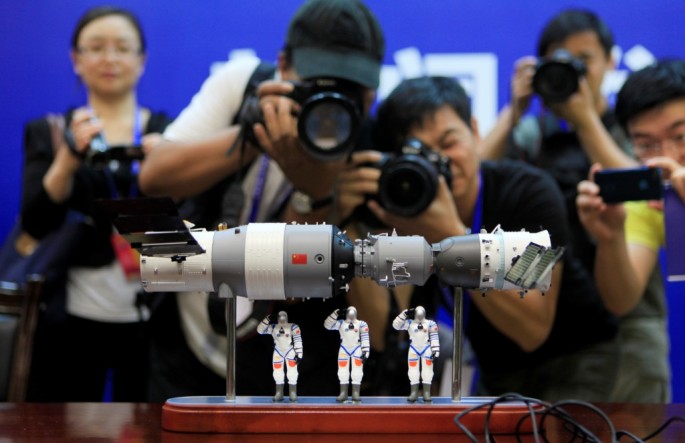China is planning to open a second space laboratory and launch its sixth manned space mission next year, the China Academy of Space Technology told the China Daily newspaper on Thursday.
The lab, named Tiangong-2, will test life support technology in space for use in China's future space station in 2016, said a spokesperson from the academy, a subsidiary of China Aerospace Science and Technology Corp (CASC).
Once the lab is in orbit, a Shenzhou-11 spacecraft will be launched by a Long March-2F rocket to dock with and transport astronauts to the space lab, the academy said.
The planned launch of the Tiangong-2 will coincide with that of China's first cargo spacecraft, the Tianzhou-1, in 2016, which will be used to deliver supplies and fuel to the Tiangong-2.
China intends to launch the core module of the space station, which is designed mainly for engineering projects and research, in 2018, and the whole station will be fully operational by 2022, according to official sources.
The Tiangong-1, China's first space laboratory, was launched in Sept. 2011. It successfully conducted six automatic and manual dockings with the Shenzhou-8, Shenzhou-9 and Shenzhou-10 spacecraft.
Following the success of China's aerospace projects in recent years, CASC also plans to speed up the development of its next generation of carrier rockets.
The China Academy of Launch Vehicle Technology, another CASC subsidiary, said that it is now in the final stages of development of the Long March-5, the country's heaviest and most advanced rocket.
Weighing 800 metric tons and standing 57 meters tall, the Long March-5 is comparable to the U.S. Delta IV and Atlas V rockets, according to China Daily. It will be able to carry payloads of up to 25 in low-Earth orbit and 14 tons in geosynchronous transfer orbit.
The Long March-5 will use liquid oxygen/kerosene or liquid oxygen/liquid hydrogen as propellant, which is friendlier to the environment than its predecessors, said Luo Xiaoyang, a senior official at the Academy of Launch Vehicle Technology.
Luo added that the Long March-5 will undergo ground drills alongside the newly built Wenchang Satellite Launch Center in Hainan Province, and that the rocket will make its debut flight next year.



























